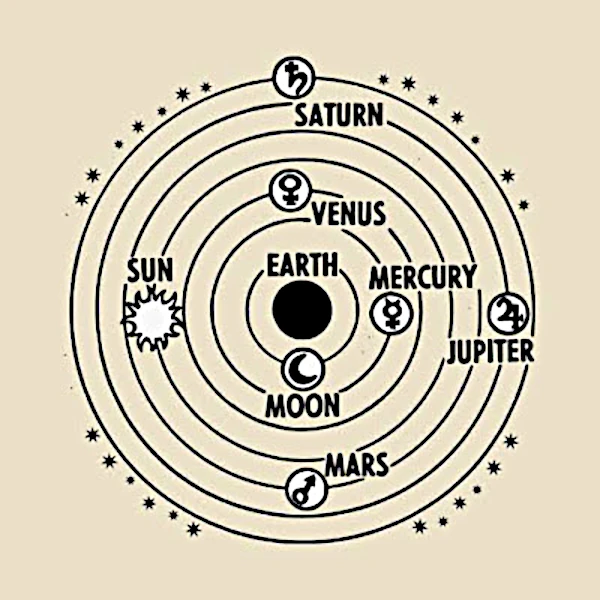
Since the dawn of thought, humanity has projected its own categories onto the Universe, turning the Cosmos into a mirror of its hopes, fears, and cognitive limits. This anthropocentric vision—where man places himself at the center of all interpretation—has shaped both foundational myths and modern scientific models. From Aristotle’s (384–322 BCE) crystalline spheres to Brandon Carter’s (1942–) Anthropic Principle, this perspective raises a fundamental question: Is our understanding of the Universe a discovery or an invention?
Plato (427–347 BCE) and Aristotle embedded anthropocentrism in Western cosmology by postulating a finite, hierarchical Universe, where Earth (the realm of imperfection) opposed the perfect heavens. Their model, refined by Ptolemy (90–168 CE), placed Earth at the center of concentric spheres—a political metaphor as much as a physical one, reflecting Greek social order.
The Copernican Revolution (Nicolas Copernicus, 1473–1543) decentered Earth, but not man: Giordano Bruno (1548–1600) was burned for suggesting infinite worlds, while Galileo (1564–1642) had to recant heliocentrism. The real shock was conceptual: as Blaise Pascal (1623–1662) wrote, “The eternal silence of these infinite spaces frightens me”—man was no longer the measure of all things.
| Period | Scientist / Philosopher | Model | Characteristic |
|---|---|---|---|
| 4th century BCE | Aristotle (384–322 BCE) | Geocentric model | Earth immobile at the center of a finite, spherical cosmos |
| 2nd century CE | Claudius Ptolemy (100–170) | Refined geocentric model | System of epicycles to explain planetary retrograde motion |
| 16th century | Nicolas Copernicus (1473–1543) | Heliocentric model | Earth is a planet orbiting the Sun |
| Early 17th century | Galileo Galilei (1564–1642) | Confirmed heliocentrism | Telescopic observations: Venus phases, Jupiter’s moons |
| Early 17th century | Johannes Kepler (1571–1630) | Elliptical orbits | Earth follows a precise elliptical orbit governed by mathematical laws |
| Late 17th century | Isaac Newton (1642–1727) | Universal gravitation | Earth is one mass among others subject to gravitational attraction |
| Early 20th century | Albert Einstein (1879–1955) | General relativity | Earth has no absolute position: it follows a geodesic in curved spacetime |
Sources: Stanford Encyclopedia of Philosophy, arXiv.
The Anthropic Principle was formulated by Brandon Carter in 1973. It distinguishes two levels:
The Weak Anthropic Principle states that our position in the Universe must be compatible with our existence as observers. In other words, the physical constants and cosmological conditions we observe cannot be arbitrary, as we could not exist otherwise.
The Strong Anthropic Principle goes further, suggesting that the Universe must possess properties allowing the emergence of conscious life at some stage of its evolution. This formulation implies that the Universe appears "fine-tuned" to permit the existence of observers.
From a physical standpoint, these principles can be interpreted as constraints on fundamental constants, such as the cosmological constant \(\Lambda\), proton mass, or electromagnetic force. A slight shift in these parameters would make the formation of galaxies, stars, and habitable planets impossible, thus limiting the existence of observers.